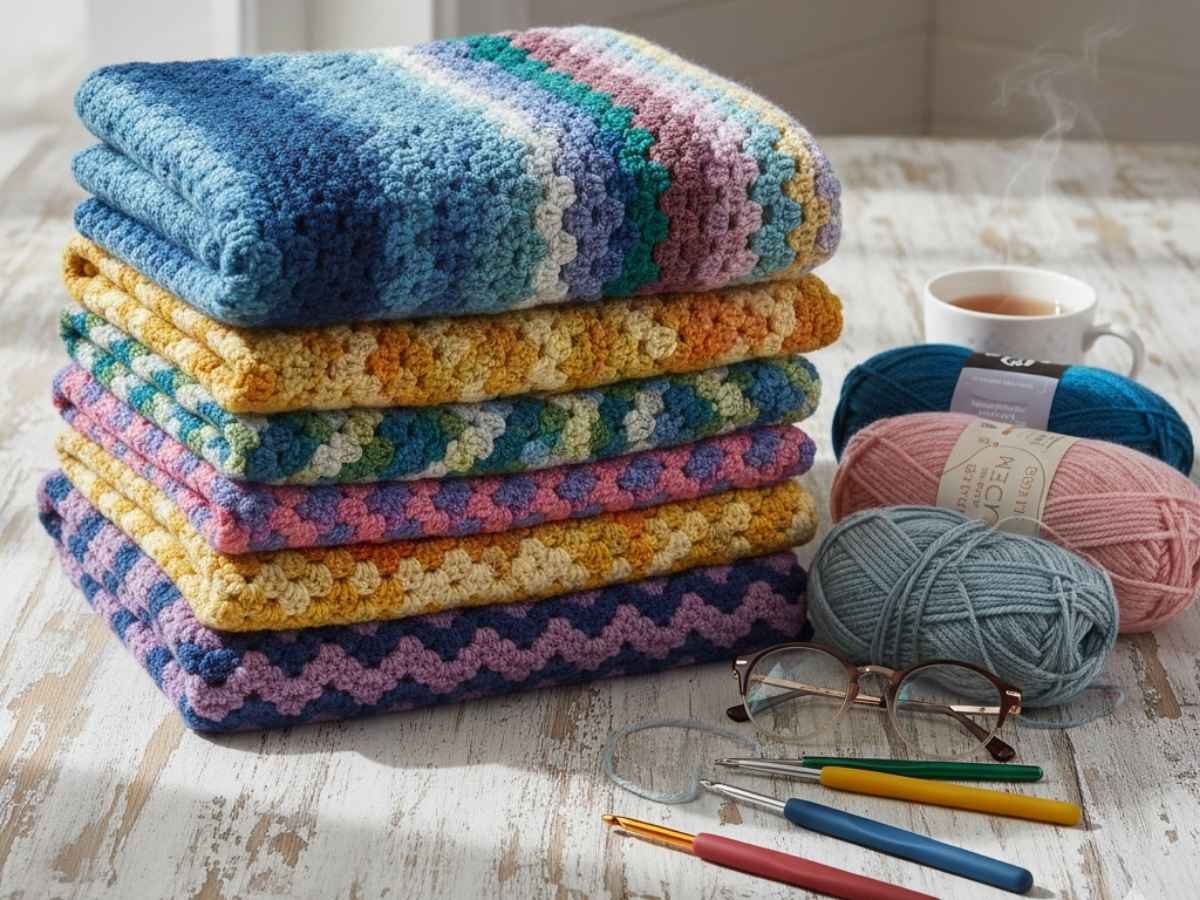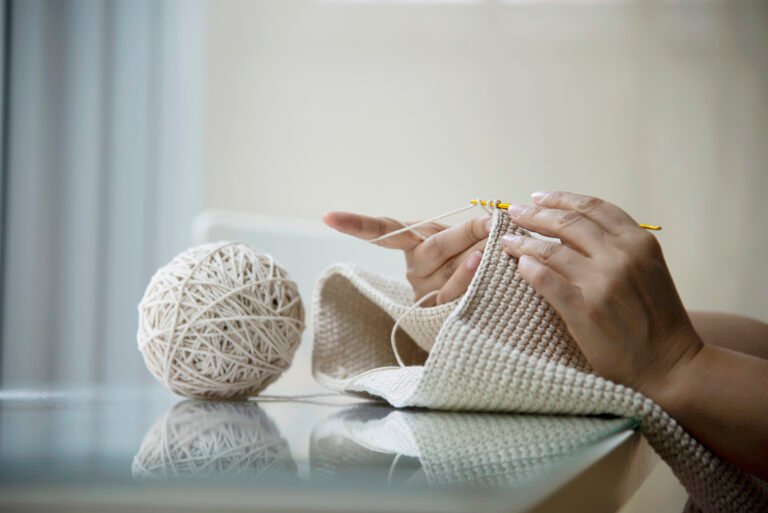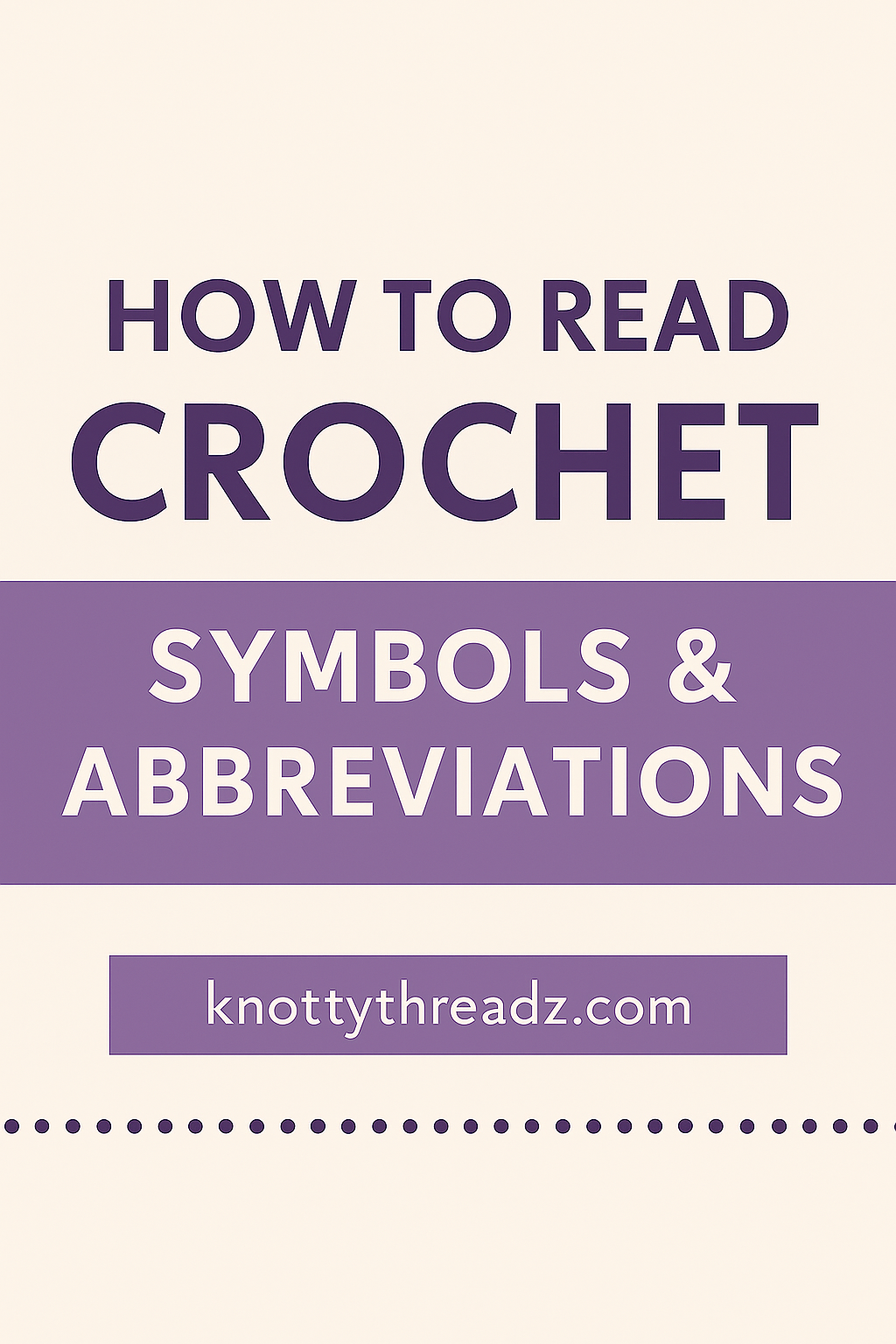If you’ve ever wanted to create something warm, cozy, and handmade, free crochet blanket patterns for beginners are the perfect place to start. Crochet blankets not only keep you warm but also offer a relaxing way to unwind after a long day. Whether you’re new to crochet or just looking for an easy project to build confidence, these patterns will help you master stitches, color changes, and textures — all while creating something beautiful for your home or as a heartfelt gift.
Crochet blankets are timeless. They’re passed down through generations, made for new babies, weddings, or simply as a creative outlet. The best part? You don’t need to spend much to get started. With the right yarn, a simple hook, and free patterns, you can create professional-looking designs even as a beginner.
Why Crochet Blankets Are Ideal for Beginners
Blankets are forgiving projects. Unlike garments that require precise measurements, blankets allow freedom in size and shape. Even if your stitches are uneven at first, the texture will hide small imperfections. Plus, repetition helps beginners improve consistency.
Working on blankets also introduces essential skills:
- Learning basic stitches like single crochet, double crochet, and granny squares.
- Practicing color changes and joining squares.
- Understanding gauge, yarn weight, and pattern reading.
By the time you finish your first blanket, you’ll have mastered the fundamentals to take on any crochet project confidently.
Materials You’ll Need
Before diving into the free crochet blanket patterns, gather the right supplies:
- Yarn: Start with medium-weight (worsted) yarn, which is easy to work with.
- Hook: Check the yarn label for recommended hook size — usually 5mm (H/8) for beginners.
- Scissors and tapestry needle: For trimming and weaving ends.
- Measuring tape: Helps keep your blanket size consistent.
Optional but helpful:
- Stitch markers to track rounds or pattern repeats.
- Row counter for long projects.
Remember, quality yarn makes a big difference. Acrylic yarns like Red Heart Super Saver or Caron Simply Soft are affordable, washable, and great for learning.
Understanding Crochet Blanket Patterns
Most beginner blanket patterns use simple stitch repeats. Once you learn to read patterns, you’ll see abbreviations like sc (single crochet), dc (double crochet), and ch (chain). Patterns often specify the multiple of stitches required (e.g., “Multiple of 3 + 2”) — this ensures your blanket maintains the correct pattern sequence.
If you prefer visual learning, many free patterns include charts or diagrams that help you understand the stitch placement. You can also find video tutorials for almost every pattern on YouTube — a great way to follow along if you’re stuck.
20 Free Crochet Blanket Patterns for Beginners
Here are 20 easy, beautiful, and free crochet blanket patterns you can try today. Instead of listing them blandly, let’s explore what makes each special and why it’s ideal for beginners.
1. Classic Granny Square Blanket
The granny square is the heart of crochet culture. Start from a small center and work outward in repeating rounds of double crochet clusters.
Steps:
- Begin with a magic ring or chain 4 and join to form a loop.
- Work clusters of 3 double crochets separated by chain spaces.
- Change colors every 2–3 rounds to create vibrant squares.
- Join your finished squares with slip stitches or whip stitch.
Yarn Suggestion: Medium-weight acrylic or cotton yarn in assorted colors.
Skill Focus: Working in rounds, changing colors, joining pieces.
Beginner Tip: Weave in ends after each square to avoid a tangled mess later.
Variation: Use a single color family for a modern, gradient effect.
2. Corner-to-Corner (C2C) Blanket
This diagonal-style blanket builds one block at a time, from one corner to the opposite corner.
Steps:
- Chain 6, then work one block (made of double crochets).
- Increase by adding a new block at the start of each row.
- Once you reach the desired width, begin decreasing each row.
- Finish with a clean border of single crochet.
Yarn Suggestion: Variegated or self-striping yarn for smooth color shifts.
Skill Focus: Increasing/decreasing, reading C2C graphs.
Beginner Tip: Mark the “right side” with a safety pin so you don’t lose track.
Variation: Try pixel art graphs to create geometric designs.
3. Moss Stitch Blanket (Linen Stitch)
The moss stitch alternates single crochets and chains, creating a dense, woven texture.
Steps:
- Chain an even number of stitches.
- Work sc, ch 1, skip 1 across the row.
- On the next row, crochet into the chain spaces.
Yarn Suggestion: Soft cotton yarn for a neat, woven look.
Skill Focus: Even tension and spacing.
Beginner Tip: Maintain a loose chain to avoid tight edges.
Variation: Use two colors every row for a tweed-like texture.
4. Ripple or Chevron Blanket
Waves of crochet stitches create the ripple effect, perfect for learning increases and decreases.
Steps:
- Chain a multiple of 14 + 2.
- Work 3 dc in one stitch for the peaks, and dc3tog for the valleys.
- Repeat across rows, maintaining the same height.
Yarn Suggestion: Soft acrylic blends in ombre shades.
Skill Focus: Shaping through stitch counts.
Beginner Tip: Count carefully — missing a peak or valley distorts the ripple.
Variation: Alternate thick and thin stripes for drama.
5. Half Double Crochet (HDC) Striped Blanket
This stitch is halfway between single and double crochet — fast and plush.
Steps:
- Chain your base length.
- Work HDC stitches in every stitch across.
- Switch colors every 4–6 rows.
Yarn Suggestion: Caron One Pound or Red Heart Soft for durability.
Skill Focus: Stitch rhythm and color management.
Beginner Tip: Yarn over loosely; tight loops make HDC harder.
Variation: Add a border of puff stitches for texture.
6. Granny Stripe Blanket
Rows of clustered granny stitches create bold stripes without joining squares.
Steps:
- Chain a multiple of 3 + 2.
- Work clusters of 3 dc separated by one chain.
- Change colors after every 2 rows.
Yarn Suggestion: Use up your scrap yarns — this blanket loves color.
Skill Focus: Stitch spacing and consistent clusters.
Beginner Tip: Carry yarn up the side instead of cutting after every color.
Variation: Use pastels for a baby blanket or bold tones for boho decor.
7. Shell Stitch Blanket
The shell stitch forms delicate fan-like shapes that add elegance.
Steps:
- Chain a multiple of 6 + 2.
- Work 5 dc into the same stitch to form a shell.
- Anchor each shell with a single crochet in the next row.
Yarn Suggestion: Light cotton or bamboo for drape.
Skill Focus: Counting and symmetry.
Beginner Tip: Block the blanket after finishing to open the shells.
Variation: Try gradient yarn for flowing color waves.
8. V-Stitch Blanket
Two double crochets in one space create an airy “V” pattern.
Steps:
- Chain an even number.
- Work (dc, ch 1, dc) into every other stitch.
- Continue repeating across rows.
Yarn Suggestion: Lightweight acrylic or cotton-blend yarns.
Skill Focus: Creating consistent openwork.
Beginner Tip: Keep chain spaces uniform for a neat look.
Variation: Work in two contrasting colors to highlight the “V” rows.
9. Waffle Stitch Blanket
A rich, textured blanket that mimics a waffle pattern using post stitches.
Steps:
- Alternate front-post and back-post double crochets.
- Repeat the 2-row pattern to build raised squares.
Yarn Suggestion: Bulky yarn for ultimate coziness.
Skill Focus: Learning post stitches.
Beginner Tip: Don’t pull the yarn too tight around posts.
Variation: Use neutral tones for a spa-style throw.
10. Basket Weave Blanket
Alternating front and back post stitches gives a woven texture that looks advanced but is beginner-friendly.
Steps:
- Chain a multiple of 8 + 2.
- Work 4 front post dc, then 4 back post dc.
- Switch the order every 4 rows.
Yarn Suggestion: Thick wool blends.
Skill Focus: Depth and texture.
Beginner Tip: Use stitch markers to mark row switches.
Variation: Add tassels for a designer finish.
11. Granny Rectangle Blanket
All the charm of granny squares without joining pieces.
Steps:
- Chain a base length, then work granny clusters around it.
- Continue in rounds, increasing at each corner.
Yarn Suggestion: Acrylic or cotton with self-striping colors.
Skill Focus: Working in the round with corners.
Beginner Tip: Use a stitch marker at each corner to track increases.
Variation: Create rectangular color gradients.
12. Textured Stripe Blanket
Combines multiple stitches to add personality and tactile interest.
Steps:
- Choose 3–4 simple stitches (HDC, puff, dc).
- Work 4–6 rows of each before switching.
Yarn Suggestion: Solid tones to show off texture.
Skill Focus: Stitch experimentation.
Beginner Tip: Keep stitch height consistent across rows.
Variation: Add a crab-stitch border for polish.
13. Puff Stitch Blanket
Soft, raised puffs make this design irresistible.
Steps:
- Yarn over, pull through several loops before closing the puff.
- Space puffs evenly with chain stitches.
Yarn Suggestion: Baby-safe acrylic or bamboo.
Skill Focus: Yarn control and tension.
Beginner Tip: Keep puffs loose for uniform size.
Variation: Mix puff and HDC rows for visual contrast.
14. Simple One-Color Throw
Perfect for absolute beginners who want to master consistency.
Steps:
- Use single crochet (sc) rows throughout.
- Maintain tension and clean edges.
Yarn Suggestion: Premium chunky yarn for texture.
Skill Focus: Even tension and counting.
Beginner Tip: Check width every few rows to avoid accidental shrinking.
Variation: Add a scalloped edge once finished.
15. Modern Granny Blanket
A bold, contemporary take with oversized clusters and minimalism.
Steps:
- Work standard granny clusters but double the stitch count per group.
- Use two or three bold colors.
Yarn Suggestion: Modern color palettes like mustard, cream, gray.
Skill Focus: Controlled tension with thicker yarns.
Beginner Tip: Larger hooks make the blanket drapier.
Variation: Alternate cluster sizes for dimension.
16. Baby Ripple Blanket
Scaled-down version of the ripple blanket — soft, small, and adorable.
Steps:
- Follow the ripple pattern with fewer stitches.
- Use lightweight, hypoallergenic yarn.
Yarn Suggestion: Cotton baby yarns in pastel tones.
Skill Focus: Maintaining symmetry and soft texture.
Beginner Tip: Avoid heavy yarn; babies prefer breathable fabrics.
Variation: Add a decorative picot edge.
17. Striped Color-Block Blanket
Chunky stripes add a bold, modern aesthetic.
Steps:
- Crochet long color blocks — about 20–30 rows per shade.
- Use double crochet stitches for speed.
Yarn Suggestion: Choose a 3-color palette for harmony.
Skill Focus: Color changing and joining.
Beginner Tip: Weave in ends neatly after each block.
Variation: Alternate matte and shiny yarns.
18. Easy Textured Afghan
Looks complicated but uses simple front-post stitches and repeat patterns.
Steps:
- Alternate FPDC and BPDC every few rows.
- Keep tension even to prevent curling.
Yarn Suggestion: Wool-acrylic blend for warmth.
Skill Focus: Reading pattern repeats.
Beginner Tip: Don’t skip chain spaces — they define the pattern.
Variation: Add fringe for a cozy, rustic finish.
19. Granny Hexagon Blanket
Creates a honeycomb-style blanket using joined hexagons.
Steps:
- Make six-sided motifs in rounds.
- Join hexagons using the join-as-you-go method.
Yarn Suggestion: Contrasting shades for each motif.
Skill Focus: Motif joining and alignment.
Beginner Tip: Lay motifs flat before joining to check placement.
Variation: Outline each hexagon in white for a stained-glass effect.
20. Chunky Crochet Blanket
Fast, luxurious, and cozy — perfect for gifting or selling.
Steps:
- Use super-bulky yarn and a 10–12 mm hook.
- Crochet using HDC or DC stitches for speed.
Yarn Suggestion: Chenille or wool blends.
Skill Focus: Working with thick yarn and big hooks.
Beginner Tip: Keep wrists relaxed; bulky yarn strains tension easily.
Variation: Add giant tassels for a boho finish.
Choosing the Right Yarn Colors
Blankets are the ultimate canvas for experimenting with color. Beginners often stick to solid hues, but you can easily elevate your design:
- Use ombre yarns for smooth transitions.
- Combine neutrals and brights for contrast.
- Follow color theory: cool tones (blue, gray) feel calming, while warm tones (yellow, red) feel cozy.
You can also create a theme — ocean blues, pastel rainbow, or earthy boho tones.
Tips for Success
- Start small. Begin with a baby blanket or lap throw before tackling queen-size afghans.
- Count your stitches. Even one missed stitch can distort your shape.
- Block your blanket. Lightly steam or wet-block to make edges even.
- Weave ends as you go. Don’t wait till the end to deal with a mountain of yarn tails!
- Be patient. Every crocheter starts somewhere — your first blanket is a milestone, not a masterpiece.
Conclusion
Crocheting a blanket is more than just a craft — it’s a journey of creativity, mindfulness, and skill-building. With these 20 free crochet blanket patterns for beginners, you’ll gain confidence, master essential stitches, and create cozy heirlooms that last for years.
Whether you make one for yourself, a loved one, or to sell, every blanket carries the warmth of your time and love.
Ready to start? Pick a pattern, grab your yarn, and begin your crochet adventure today. Visit KnottyThreadz.net for more free crochet patterns, DIY tutorials, and craft inspiration.
FAQs About Free Crochet Blanket Patterns for Beginners
1. What is the easiest crochet blanket pattern for beginners?
The granny square or single crochet blanket is easiest to start with since it uses simple stitches and doesn’t require advanced shaping.
2. How much yarn do I need for a crochet blanket?
A baby blanket typically needs around 800–1000 yards, while a full-size throw may need 2000–3000 yards, depending on stitch type and yarn weight.
3. How long does it take to crochet a blanket?
For beginners, small blankets can take 10–20 hours. Larger afghans may take several weeks, depending on stitch complexity and daily time spent.
4. Can I mix different yarn brands or types?
Yes, but ensure they’re of similar weight and texture to maintain consistency. Mixing fibers can cause uneven tension.
5. How do I make my crochet blanket edges straight?
Count your stitches at the end of each row and avoid skipping chains accidentally. Bordering your blanket also hides minor inconsistencies.
6. Are these patterns good for selling finished blankets?
Absolutely! Handmade blankets sell well on Etsy or local markets. Just ensure your pricing covers yarn, time, and effort.




